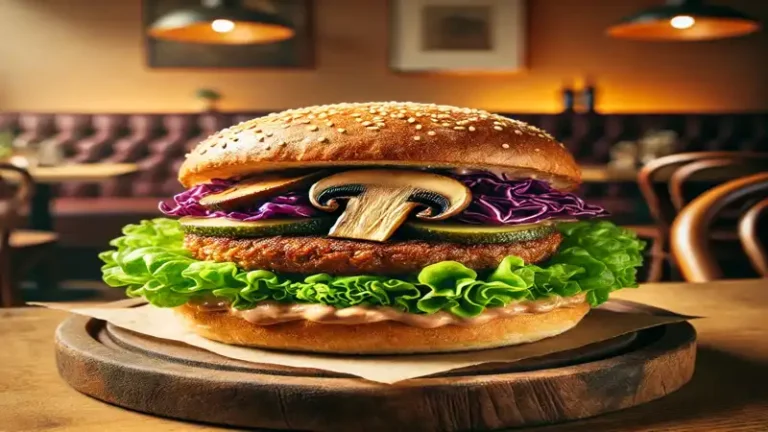
As of 2025, the title of the world’s largest fast food chain has shifted from McDonald’s to Mixue Bingcheng, a Chinese bubble tea and ice cream brand. Mixue Bingcheng now boasts over 45,000 outlets globally, surpassing McDonald’s, which has approximately 41,800 locations worldwide.
The Rise of Mixue Bingcheng
Founded in 1997 by Zhang Hongchao, Mixue Bingcheng began as a modest shop selling shaved ice and cold drinks. Over the years, it has expanded rapidly, primarily through a franchise model. Notably, over 99% of its stores are franchised, with the company generating significant revenue from selling food materials, equipment, and packaging to its franchisees.
The brand’s success can be attributed to its commitment to affordability. Soft-serve ice cream cones are priced at approximately 15 cents, while beverages range from 30 cents to $1.20. This pricing strategy aligns with Hongchao’s vision: “Let people around the world eat well and drink well for just two American dollars.”
While the majority of Mixue Bingcheng’s outlets are located in China, the company has been expanding its presence in other Asian countries, including Indonesia, Vietnam, and Malaysia. Despite its vast number of locations, Mixue Bingcheng’s revenue remains behind other major beverage chains like Starbucks and Tim Hortons. However, its rapid expansion suggests that it may soon become a dominant player not only in the Asian market but globally.
The Secret to Mixue Bingcheng’s Success
Several factors contribute to Mixue Bingcheng’s rapid growth:
- Affordability – Unlike many premium beverage brands, Mixue Bingcheng offers products at significantly lower prices, making them accessible to a wider audience.
- Franchise Model – By focusing on a low-cost franchise system, Mixue Bingcheng has attracted thousands of entrepreneurs looking to invest in an established brand with high potential.
- Simple Yet Effective Menu – The company maintains a straightforward menu centered around tea-based beverages, ice cream, and fruit-infused drinks, ensuring easy scalability.
- Strong Digital Presence – Mixue Bingcheng leverages social media and digital marketing strategies to engage younger audiences, particularly in markets like China, where online presence is crucial for business success.
McDonald’s: A Legacy of Global Presence
McDonald’s, founded in the 1940s by Richard and Maurice McDonald, revolutionized the fast food industry with its focus on speed, efficiency, and a limited menu. The introduction of the franchise model by Ray Kroc in the 1950s facilitated rapid expansion. By 1958, McDonald’s had sold 100 million burgers.
As of 2023, McDonald’s operated approximately 41,800 restaurants worldwide, with the United States hosting the largest number of locations. The brand’s global footprint spans over 100 countries, offering a consistent menu with regional adaptations to cater to local tastes. For example, McDonald’s in India offers the McAloo Tikki burger, while Japan features the Teriyaki Burger.
McDonald’s also stays ahead of the competition by adopting technological advancements such as AI-powered ordering kiosks, mobile app promotions, and drive-thru automation. This approach ensures that McDonald’s remains not just a food provider, but a pioneer in the fast-food industry.
Starbucks: Brewing Global Success
Starbucks, primarily known for its coffee, has expanded its menu to include various food items and beverages. Established in Seattle in 1971, the brand’s green siren emblem is now recognizable in over 80 countries. By the end of 2023, Starbucks operated 38,587 locations globally. The company’s focus on creating a unique customer experience, characterized by comfortable settings and personalized beverages, has contributed to its global appeal.
Starbucks differentiates itself from traditional fast food chains by emphasizing sustainability, ethical sourcing, and high-quality ingredients. The company has pledged to reduce waste and improve sustainability by introducing recyclable cups and ethically sourced coffee beans. This approach appeals to environmentally-conscious consumers and strengthens brand loyalty.
Other Major Fast Food Chains
Several other fast food chains have established significant global presences:
- Subway: With approximately 36,592 locations worldwide, Subway is renowned for its customizable sandwiches and salads. The brand operates in 99 countries, emphasizing fresh, made-to-order offerings. Subway’s expansion strategy has also focused on smaller, convenient store formats.
- Kentucky Fried Chicken (KFC): Specializing in fried chicken, KFC operates over 27,000 locations across more than 145 countries. The brand’s secret recipe of eleven herbs and spices has been a key to its success.
- Burger King: With more than 18,700 locations globally, Burger King serves over 11 million guests daily. The brand is known for its flame-grilled burgers and the “Have It Your Way” customization approach.
- Domino’s: As a leading pizza chain, Domino’s has approximately 20,000 stores in 90 markets worldwide. The brand reaches about 1 million customers daily with its diverse pizza offerings and technology-driven delivery service.
- Pizza Hut: Operating more than 19,000 locations in over 100 countries, Pizza Hut offers a variety of pizza styles and other menu items tailored to regional preferences.
- Dunkin’ Donuts: With approximately 11,300 locations worldwide, Dunkin’ Donuts sells 2.9 billion doughnuts each year. The brand’s menu varies by country, featuring unique items like green tea-glazed doughnuts in China and Japan.
Trends and the Future of Fast Food Chains
The fast food industry is evolving rapidly, with key trends shaping the future of major chains:
- Healthier Menu Options – Many brands are introducing plant-based alternatives, lower-calorie meals, and fresh ingredients to meet consumer demand for healthier eating habits.
- Technology and Automation – From AI-powered drive-thrus to self-ordering kiosks, fast food chains are investing heavily in technology to enhance efficiency and improve customer experience.
- Sustainability Efforts – Eco-friendly packaging, reducing food waste, and ethical sourcing have become major priorities for global fast food chains.
- Delivery and Digital Expansion – The rise of food delivery services has transformed how customers interact with fast food brands, with companies investing in mobile apps and online ordering systems.
- International Expansion – Fast food chains are focusing on emerging markets in Asia, Africa, and South America, where there is high demand and growth potential.
Conclusion
The fast food industry is dynamic, with brands continually evolving to meet changing consumer preferences and expand their global footprints. The recent ascension of Mixue Bingcheng as the largest fast food chain by number of outlets underscores the growing influence of Asian brands in the global market. Meanwhile, established giants like McDonald’s and Starbucks continue to innovate and adapt, maintaining their significant presence worldwide. As consumer trends shift towards healthier options, technological advancements, and sustainability, the future of fast food remains exciting and highly competitive.
For more update please visit my website:letflix






